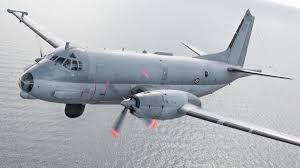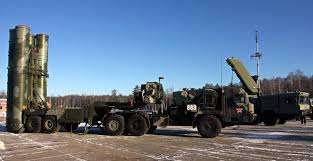France decries Russian s-400 radar locking onto its maritime patrol aircraft over Baltic sea

Paris: A French Navy Atlantique 2 maritime patrol aircraft was illuminated by the fire-control radar of a Russian long-range air defense system, while flying over the Baltic Sea earlier this week, according to France’s Minister of the Armed Forces Sébastien Lecornu.
AFrench Navy Atlantique 2 maritime patrol aircraft was illuminated by the fire-control radar of a Russian long-range air defense system, while flying over the Baltic Sea earlier this week, according to France’s Minister of the Armed Forces Sébastien Lecornu. The incident is the latest to occur in a highly strategic region in which NATO and Russian assets closely monitor each other, and which has seen a recent spate of suspected sabotage of undersea infrastructure. This has occurred as NATO officials increasingly warn of the threat of Russian ‘hybrid warfare’ tactics here and elsewhere in Europe.

“On Wednesday night, a French Atlantique 2 maritime patrol aircraft was the target of Russian intimidation,” Lecornu said in a statement issued today on X. “It was patrolling in international airspace over the Baltic Sea as part of a NATO operation and was illuminated by the fire-control radar of an S-400 ground-based air defense system. This aggressive Russian action is unacceptable. Our armed forces will continue to act to defend freedom of navigation in international air and sea spaces.”
“Illuminating our aircraft in international waters with radar is an aggressive action,” said Col. Guillaume Vernet, a spokesman for the French Armed Forces. “The professional attitude of the crew prevented any escalation.”
Additional reports suggest that as well as being locked on by the fire-control radar, the Atlantique 2 was subjected to some kind of jamming by the Russian Armed Forces.
The Atlantique 2 was flying from its home base at Lann-Bihoué in Brittany, northern France, and reportedly flew a route that took it off the coast of Sweden and other countries in the Baltic.
While the Atlantique 2 began its service life primarily as an anti-submarine warfare platform, its mission spectrum has increased considerably in more recent years, as you can read about here.
As a surveillance asset, whether operating over water or over land, the Atlantique 2 is well equipped with sensors, especially after its Standard 6 upgrade, 18 of which are being completed.
In its current configuration, the twin-engine turboprop boasts a Thales Searchmaster active electronically scanned array (AESA) surveillance radar, a forward-looking infrared (FLIR) camera under the nose, an MX-20 sensor turret with electro-optical and infrared cameras below the rear fuselage, a magnetic anomaly detector (MAD) in the tail for acquiring submerged submarines, and wingtip electronic support measures (ESM) pods to intercept radio transmissions. The aircraft has a mission crew of 10 sensor operators, plus another four in the cockpit.
With a range of 4,300 nautical miles and an endurance of 14 hours, the Atlantique 2 is an ideal surveillance asset and can even conduct strike missions overland.
“We are the only French aircraft equipped with so much imagery and electromagnetic surveillance kit and able to stay in the area for so long — up to 14 hours on task,” the commanding officer of one of the two Atlantique 2 squadrons told AirForces Monthly in 2019. “That allows us to assess information, to reinforce it, to make sure that it’s a target that needs dealing with and to release weapons.”
It’s unclear exactly where the incidents occurred, but it seems almost certain that the French Navy aircraft was in international airspace close to the Russian exclave of Kaliningrad. The Baltic is a routine operating area for the Atlantique 2 and other NATO maritime patrol and surveillance aircraft, from where they ensure the safety of navigation as well as keep tabs on Russian naval and air movements and activities on the ground in Kaliningrad, which is sandwiched between NATO members Poland and Lithuania.
The heavily militarized exclave is a key area of interest to NATO. As well as hosting the headquarters of the Russian Navy’s Baltic Fleet, it also has important military air bases and serves as something of a missile bastion for Russia. It is home to ground-launched Iskander short-range ballistic missiles and has temporarily hosted Kinzhal air-launched ballistic missiles launched by MiG-31 Foxhound interceptors. In the past, there has also been speculation that Russia might deploy the 9M729 ground-launched cruise missile (SSC-8 Screwdriver) there. This controversial weapon violated the terms of the now-defunct Intermediate-Range Nuclear Forces Treaty, according to U.S. officials, and led to the United States withdrawing from that treaty.
As to the S-400, this long-range air defense system has been deployed to Kaliningrad in the past, although in late 2023 it was reported that at least some of the systems, or components of them, had been moved from the exclave, likely for use in the war in Ukraine. However, the system involved in the incident this week wouldn’t necessarily have had to be in Kaliningrad to have illuminated the French Navy aircraft. With a claimed range of more than 200 miles, the fire-control radar could also have been located in Belarus and illuminated the aircraft off the coast of Kaliningrad, or it could have been stationed in the vicinity of St. Petersburg, provided the Atlantique 2 was operating at the eastern end of the Baltic, flying off the coast of Finland or Estonia.
Either way, the fact that a radar associated with the S-400 locked on to the Atlantique 2 will likely have provided very useful intelligence for the French Navy. Using its ESM equipment, the aircraft may have been able to eavesdrop on communications between Russian air defense operators as well as gain a better understanding of the S-400 and how it’s used. At the very least, the mission crew aboard the French aircraft should have been able to locate where the threatening radio-frequency emission was coming from, establishing the location of the S-400 and the type of radar used.
As well as routine intelligence-gathering flights in the region, maritime patrol and surveillance of the region have been stepped up in the wake of reported sabotage incidents that have targeted undersea cables in the Baltic. Most notably, in December, undersea cables between Estonia and Finland were damaged, with the suspected culprit vessel, the Eagle S, reportedly being extensively outfitted with espionage equipment.
As we reported recently, the newly created Baltic Sentry mission, which began this week, is dedicated to the protection of critical underwater infrastructure in this region.
Speaking to TWZ earlier this month, a NATO naval spokesman said: “We’ve had persistent military presence in the Baltic Sea and that is something that will continue in full support of our Baltic allies. We will continue to work with our allies to determine options and assets to maintain an enduring military presence.”
In addition, Russia has been accused of conducting large-scale jamming of GPS navigation in the Baltic region for some time now. Russian GPS jamming has been reported in the Baltic since at least 2017 and last year, U.K. authorities confirmed that a Royal Air Force Dassault 900LX business jet transporting the U.K. defense secretary experienced GPS jamming while flying near Kaliningrad. Russia has been accused of using similar tactics to target military aircraft elsewhere in Europe, too.
GPS systems are widely used for accurate aircraft navigation, increasing safety and efficiency, with most aircraft having backup systems if the GPS is lost.
For its part, Russia has a wide array of man-portable and vehicle-mounted electronic warfare systems that are reportedly capable of jamming transmissions and even feeding false information into networks, including “spoofing” GPS signals and potentially sending parties and vehicles off their intended course.
While the Baltic region has long been the backdrop for sometimes tense interactions between NATO and Russian military assets, the war in Ukraine and recent incidents of apparent sabotage on the seabed have increased the focus on this area, and officials are now speaking more frequently and openly about the Kremlin’s nefarious intentions here and elsewhere.
Yesterday, Gen. Christopher G. Cavoli, commander of U.S. European Command and supreme allied commander Europe (SACEUR), said that Russian interference of aircraft “is widespread,” extends “far beyond” European borders, and “is something that is quite serious,” affecting all kinds of aircraft, both military and civilian.
In the Baltic region specifically, there seems little prospect of this kind of interference diminishing. Although using an air defense radar to illuminate a NATO aircraft in international waters is a provocative action, it’s not the first time that Russia has used belligerent tactics over these waters and will almost certainly not be the last.





